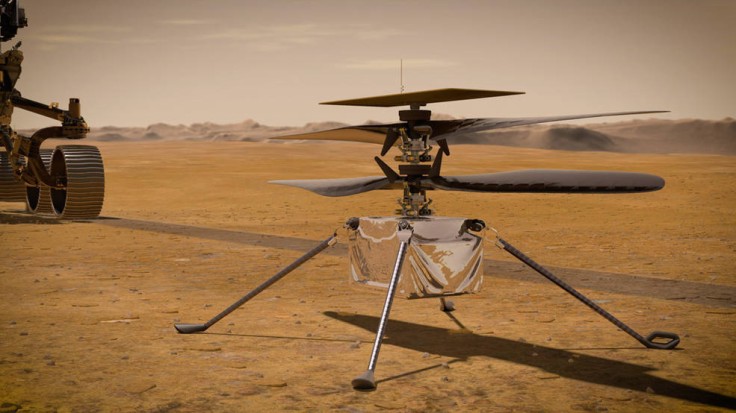NASA's Mars Ingenuity helicopter is still going strong and proving experts wrong.
The space agency recently announced that the helicopter successfully finished its 48th flight since arriving on the Red Planet on Feb. 18, 2021, outliving the expected lifespan NASA experts gave it nine times over.
Experts previously believed that Ingenuity would only survive five flights before its parts start failing.
NASA Mars Ingenuity Helicopter 48th Flight Details

NAS mentioned in its Perseverance Rover webpage that Ingenuity accomplished its 48th flight on Mars on Mar. 22 or Sol 741 of its mission at the mean solar time of 3:15 PM. It marked its 48th flight with a picture from its camera pointing directly downward in its fuselage to track the ground during flight.
Space.com reports that Ingenuity reached a maximum altitude of around 39 ft. to observe potential science targets that its partner, the Mars perseverance rover, could study for signs of past life on the planet.
During the flight, Ingenuity traveled at a top speed of 10.4 mph and covered a horizontal distance of around 1,3000 ft., lasting nearly 150 seconds in the air, per its mission flight log.
Unfortunately, Ingenuity didn't break any of its previous records during its 48th flight, per the official NASA Jet Propulsion Laboratory's Twitter account. The highest altitude Ingenuity reached was around 46 ft. during its 35th flight on Dec. 3, 2022.
However, it did break its ongoing record of possible flights on the Red Planet, as experts previously predicted that Ingenuity would only last five flights before its parts started to fail.
Read More : NASA Publishes New Hubble Photo of NGC 5486
With it notching its 48th flight under its proverbial belt, Ingenuity can look forward to another extension to its mission to survey and guide the Perseverance rover to find signs of life within the Jezero Crater, its landing zone in 2021.
Interestingly, March 2023 marks exactly one Earth year since NASA officially extended the helicopter's mission. Thomas Zurbuchen, who was NASA's science chief in Mar. 2022, mentioned that the space agency didn't even know if powered, controlled flight of an aircraft on Mars was possible, per NASA's Jet Propulsion Laboratory webpage.
However, with Ingenuity's success, it is now looking forward to the helicopter's involvement in Perseverance's second science campaign - an amazing feat in space exploration considering how fast NASA changed its mindset in such a short period.
Ingenuity's Make

NASA's Ingenuity features four carbon-fiber blades arranged into two rotors that spin in opposite directions at around 2,400 rpm, a rate faster than a passenger helicopter can do on Earth. It also has solar cells and batteries to gather and store energy for its flights and other components, per NASA.
Ingenuity doesn't carry science instruments as its primary mission is to guide Perseverance around obstacles, along with it being a separate experiment from its partner rover.
Experts previously believed that Ingenuity could only survive five flights without sustaining damage because of Mars' thin atmosphere, which makes it difficult to achieve enough lift. Martian nights could also reach temperatures as cold as -130 degrees Fahrenheit, which could affect its ability to fly.
However, its lightweight, fast rotors and cold-resistant design allow it to survive past its predicted five flights without issue.
Related Article : NASA Showcases Martian Sunset With New Ingenuity Picture









